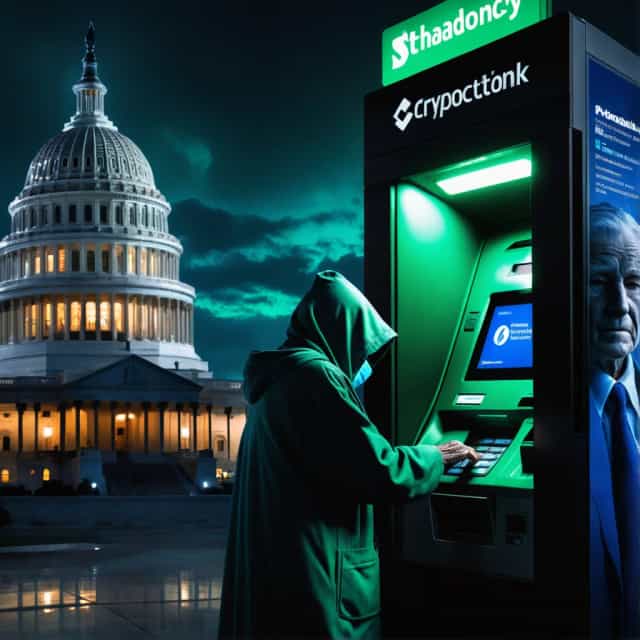
Image source: Block Media
Trump’s Criticism of Federal Reserve Independence: U.S. Bond Market Remains Resilient
Donald Trump, the former U.S. president, has maintained a relentless critique of the Federal Reserve’s (Fed) independence, even hinting at utilizing the central bank as a mechanism to alleviate government debt burdens. Despite such political pressures, the U.S. bond market has displayed remarkable stability, shrugging off concerns that might otherwise disrupt financial systems.
Financial analysts have taken note of this resilience, with Bloomberg reporting on October 24 that the muted reaction in bond markets signifies an unwavering investor trust in the Fed’s ability to uphold its inflation-stability mandate and autonomy.
Inflation Expectations Remain Anchored
Data reveals that market-based inflation expectations have been steadily declining since July, aligning closely with the Fed’s 2% inflation target over the medium to long term. Investors appear confident in the Fed’s ability to maintain economic stability, despite Trump’s public attempts to influence its policies. These efforts include advocating for rapid interest rate cuts and reshaping the institution’s framework to suit more politically aligned objectives.
The bond market’s apparent assumption that the Fed will continue to operate independently and fulfill its traditional mandate stands as a testament to its resilience. This reflects investors' belief that political interference is unlikely to disrupt the central bank’s credibility.
Tepid Market Reaction to Political Maneuvers
Even after the Trump administration’s aggressive actions aimed at altering the Fed’s decisions—such as applying pressure for interest rate reductions and initiating legal measures to remove Federal Reserve Governors—the bond market has scarcely flinched. Recent developments, such as the appointment of Steven Miran, an advocate of more radical rate cuts, to the Fed board, have elicited similarly restrained reactions.
Surveys from the New York Federal Reserve show that consumer inflation expectations for the next three to five years remain stable, hovering around 3%. Likewise, the Fed’s preferred inflation expectations measure—five-year forward inflation rates—continues to hold at a steady 2.3%. These figures suggest that political gestures have yet to meaningfully disrupt investor sentiment or raise alarm bells in the financial markets.
Expert Analysis: A “Mystery” in Market Stability
Financial experts have described the bond market’s indifference as somewhat puzzling. Historically, threats to central bank independence trigger inflation fears, particularly in economies where political interference has undermined monetary policy. Notably, in emerging markets, such scenarios often lead to heightened inflationary pressures and volatility. Yet, the U.S. bond market has defied expectations, remaining calm and collected despite Trump’s actions.
The prevailing attitude among investors appears to be rooted in pragmatism—a “wait-and-see” approach to Fed independence. Analysts argue that unless tangible impacts on inflation, interest rates, or policy credibility surface, political risks will remain sidelined in market evaluations.
Subtle Signals of Concern: Monitoring the Yield Curve
While overt signs of alarm are absent, some investors are closely watching the steepening of the yield curve—a phenomenon where long-term interest rates rise faster than short-term ones. This could signal underlying concerns about potential challenges to Fed independence. However, these movements have yet to gain observable momentum within broader market trends.
Steven Blitz, chief economist at TS Lombard, summed up the sentiment: “The market believes the Fed will continue to operate in its traditional mode, adhering to its mandates, irrespective of outside influences.” This widespread confidence underscores the bond market’s ability to gauge political developments without overreacting prematurely.
Fed Leadership Transition: A Watchful Eye on Policy Direction
An impending crossroads looms over Jerome Powell’s term as Fed Chair, which is set to expire in May next year. This moment could mark a critical turning point for the Fed, particularly if a new Chair is installed with a mandate for more politically influenced rate policies. Such a shift could have profound implications for market dynamics, potentially sparking volatility and recalibrating investor expectations.
Until this leadership transition unfolds, market participants largely anticipate the Fed to uphold its independence and maintain its policy trajectory. Analysts caution, however, that broader uncertainties will persist, especially as political pressures intensify during critical decision-making periods.
Conclusion: Confidence Despite Challenges
For now, the U.S. bond market's calm amidst Trump’s attempts to redefine the Fed’s independence strengthens investor confidence. The resilience displayed suggests that faith in the Fed’s mandate overshadowing short-term political dynamics remains intact. However, lingering questions persist as markets face uncertainty surrounding future leadership and the Fed's ability to maintain autonomy in the face of political interference.
As the debate continues, one thing remains clear: the Fed’s credibility is deeply tied to the perceived strength of its independence, a cornerstone upon which both market stability and investor trust are built. The months ahead promise to be pivotal in determining whether the central bank can retain this vital autonomy and continue serving its mandate effectively.










